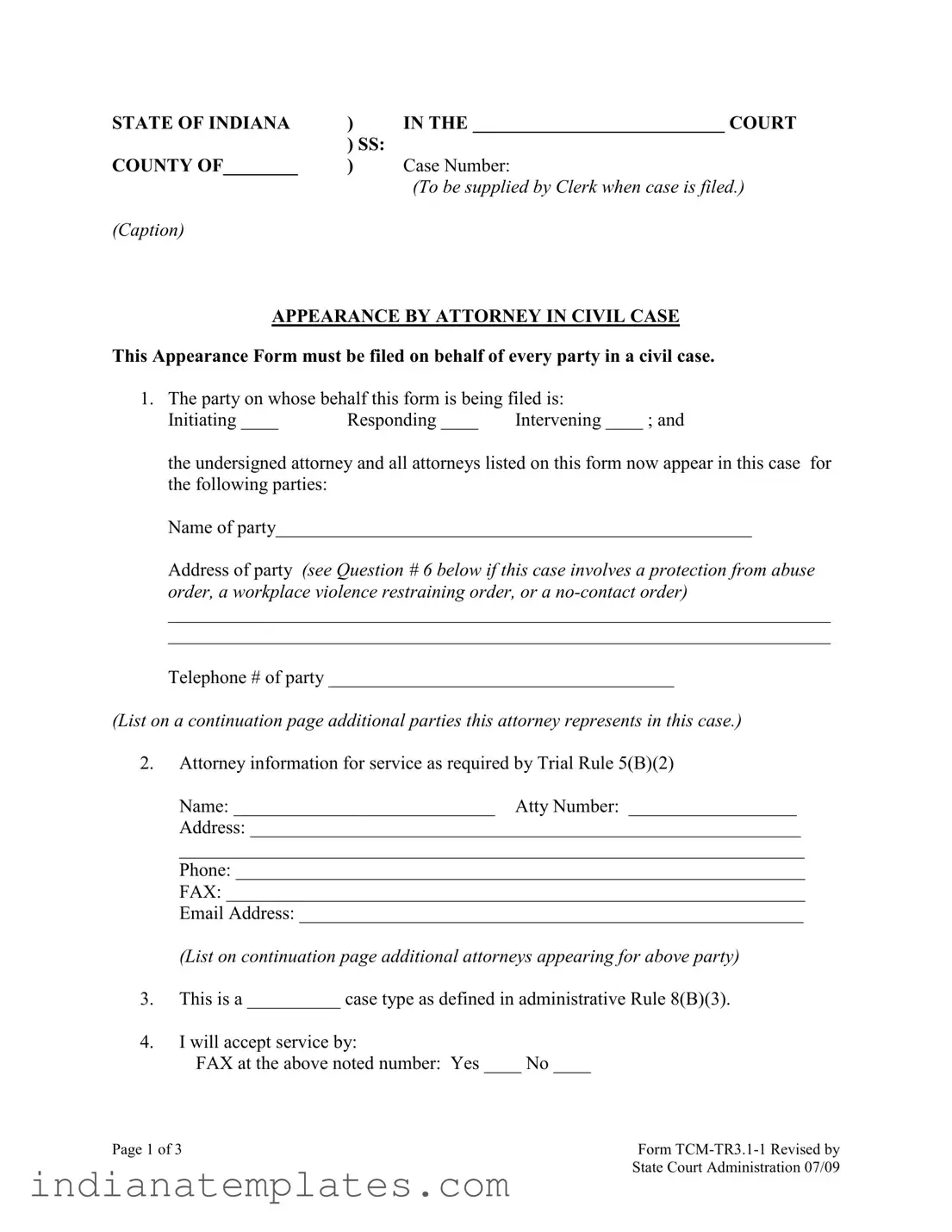The Indiana Appearance form is similar to the Notice of Appearance, which is used in various jurisdictions to inform the court and other parties that an attorney is representing a specific party in a legal matter. Like the Indiana Appearance form, the Notice of Appearance includes details about the attorney, the party they represent, and their contact information. This document is crucial for ensuring that all parties are aware of legal representation and can facilitate communication throughout the case.
Another document akin to the Indiana Appearance form is the Entry of Appearance. This document serves a similar purpose in notifying the court of an attorney's involvement in a case. It typically includes the attorney's name, contact information, and the client they represent. Both forms emphasize the importance of clear communication and proper notification to all parties involved in the legal process.
The Certificate of Service is also comparable to the Indiana Appearance form, as it verifies that all parties have received copies of the necessary documents. This form ensures that everyone involved is kept informed and has the opportunity to respond. While the Indiana Appearance form focuses on representation, the Certificate of Service highlights the procedural aspect of ensuring that all parties are aware of the filings made in the case.
The Civil Case Information Sheet is another document that shares similarities with the Indiana Appearance form. This sheet collects essential information about the case, including the parties involved and the nature of the dispute. While the Indiana Appearance form centers on attorney representation, the Civil Case Information Sheet provides a broader overview of the case, which can be beneficial for court administration.
The Motion to Appear Pro Hac Vice is a document that allows an attorney from outside the jurisdiction to represent a client in a specific case. Like the Indiana Appearance form, it requires detailed information about the attorney and their client. This motion must be filed to ensure that the court recognizes the attorney's authority to act on behalf of the client, similar to how the Indiana Appearance form establishes representation within the state.
The Petition for Intervention is another related document, as it allows a third party to join an ongoing case. This petition must outline the intervenor's interest in the case and how it relates to the existing parties. Like the Indiana Appearance form, the Petition for Intervention requires the submission of detailed information about the parties involved and their legal representation.
The Indiana Appearance form is similar to the Notice of Appearance, which is used in various jurisdictions to inform the court and other parties that an attorney is representing a specific party in a legal matter. Like the Indiana Appearance form, the Notice of Appearance includes details about the attorney, the party they represent, and their contact information. This document is crucial for ensuring that all parties are aware of legal representation and can facilitate communication throughout the case. For more information on legal documents, you can visit UsaLawDocs.com.
The Affidavit of Service is similar in function to the Indiana Appearance form, as it confirms that documents have been properly served to all parties. This affidavit provides proof that the necessary notifications have been made, ensuring compliance with procedural requirements. Both documents play a critical role in maintaining transparency and accountability in legal proceedings.
The Substitution of Attorney form is also comparable to the Indiana Appearance form, as it allows one attorney to replace another in representing a client. This form requires the signatures of both the outgoing and incoming attorneys, along with the client’s consent. Similar to the Indiana Appearance form, it ensures that the court is aware of any changes in legal representation.
Lastly, the Statement of Claim is a document that outlines the basis of a legal action. While it differs in purpose from the Indiana Appearance form, both documents are essential in civil cases. The Statement of Claim sets the stage for the legal dispute, while the Indiana Appearance form establishes who will represent the parties involved. Both are integral to the progression of a case through the court system.
